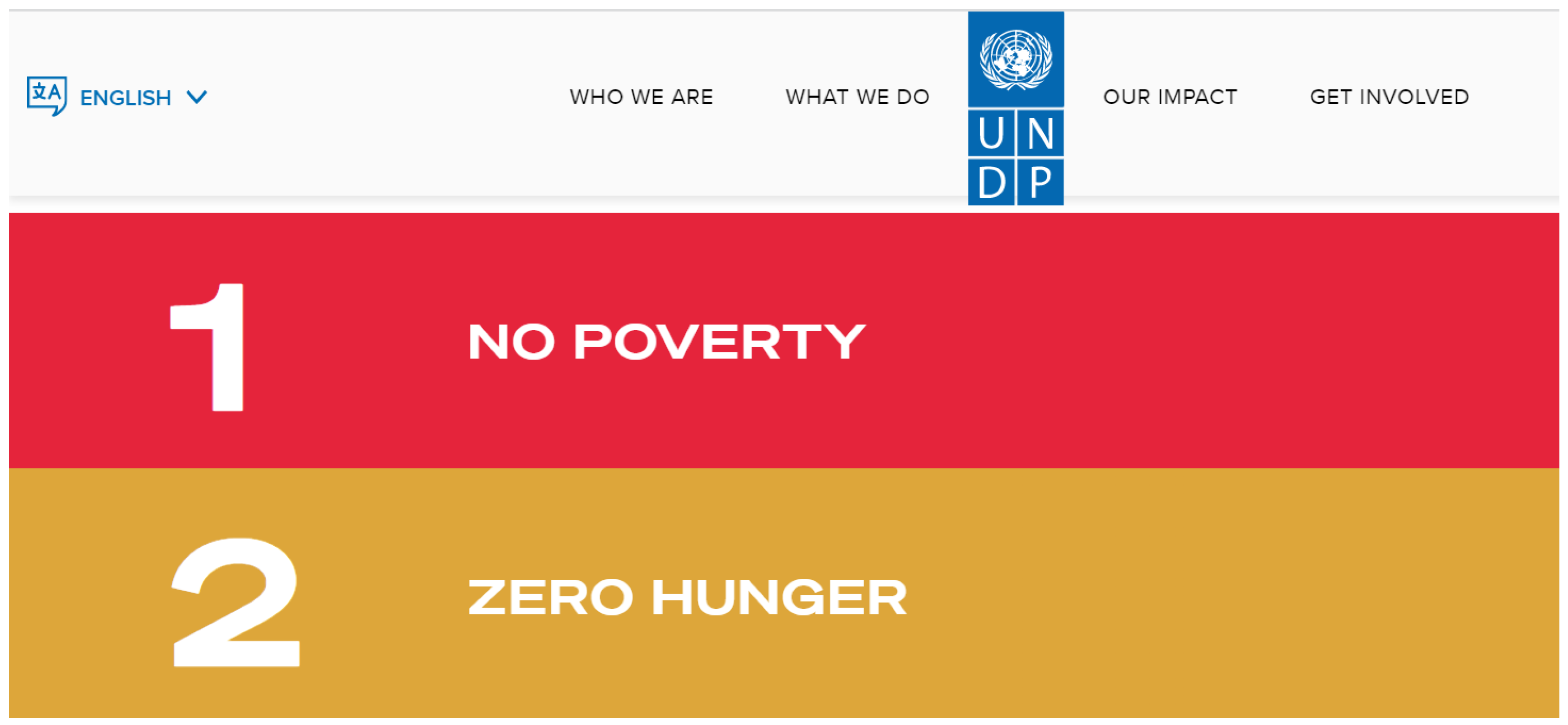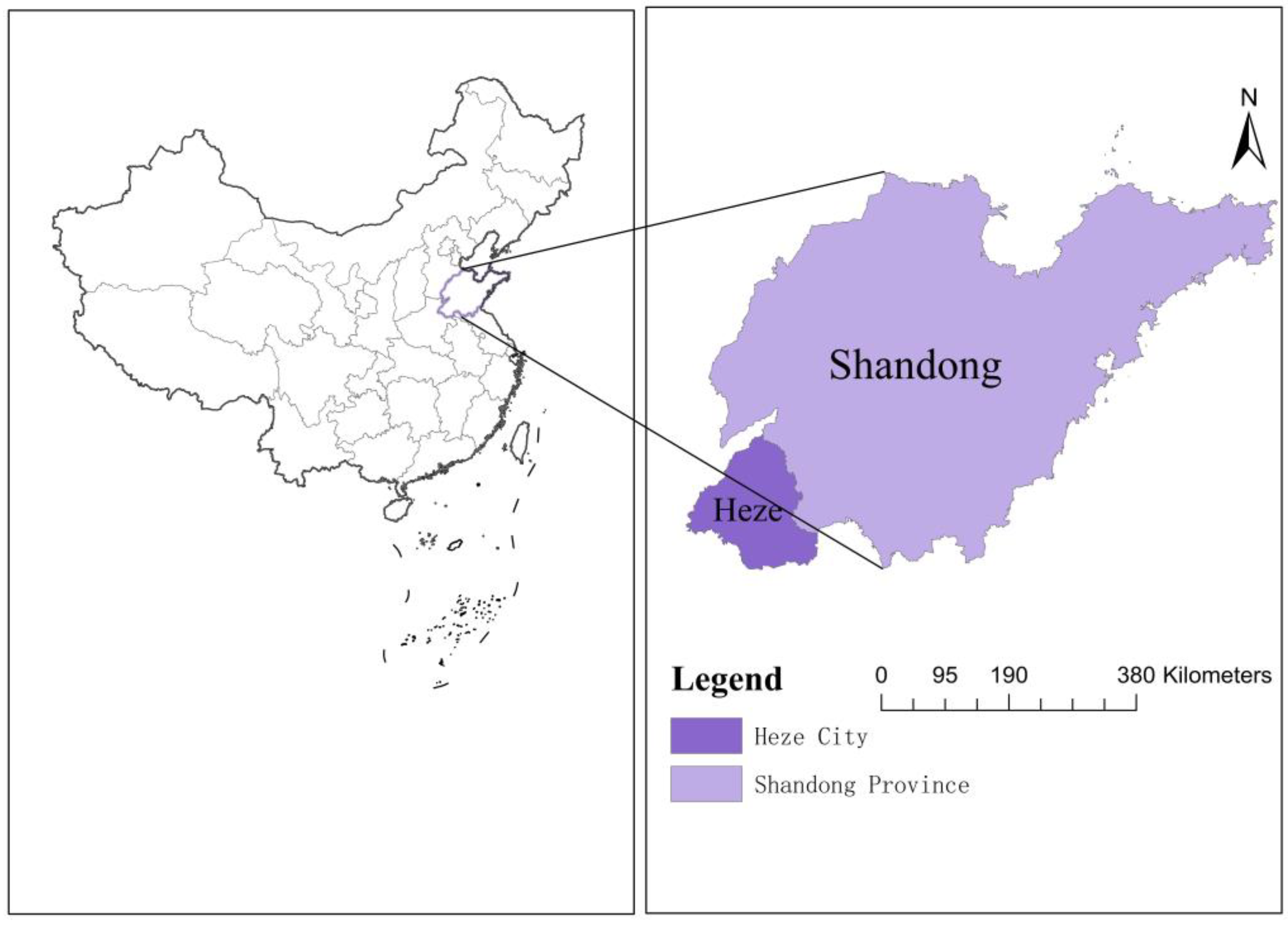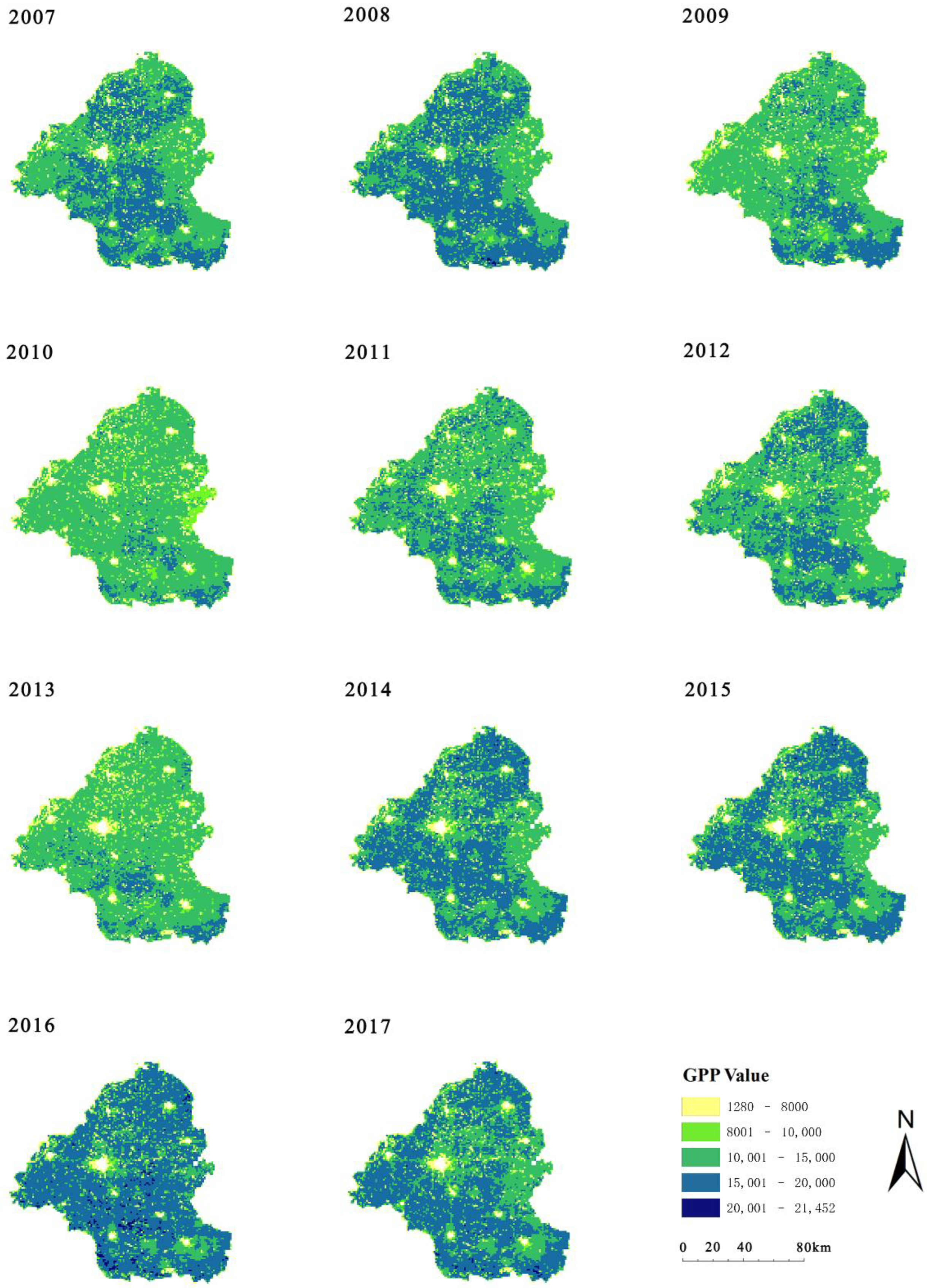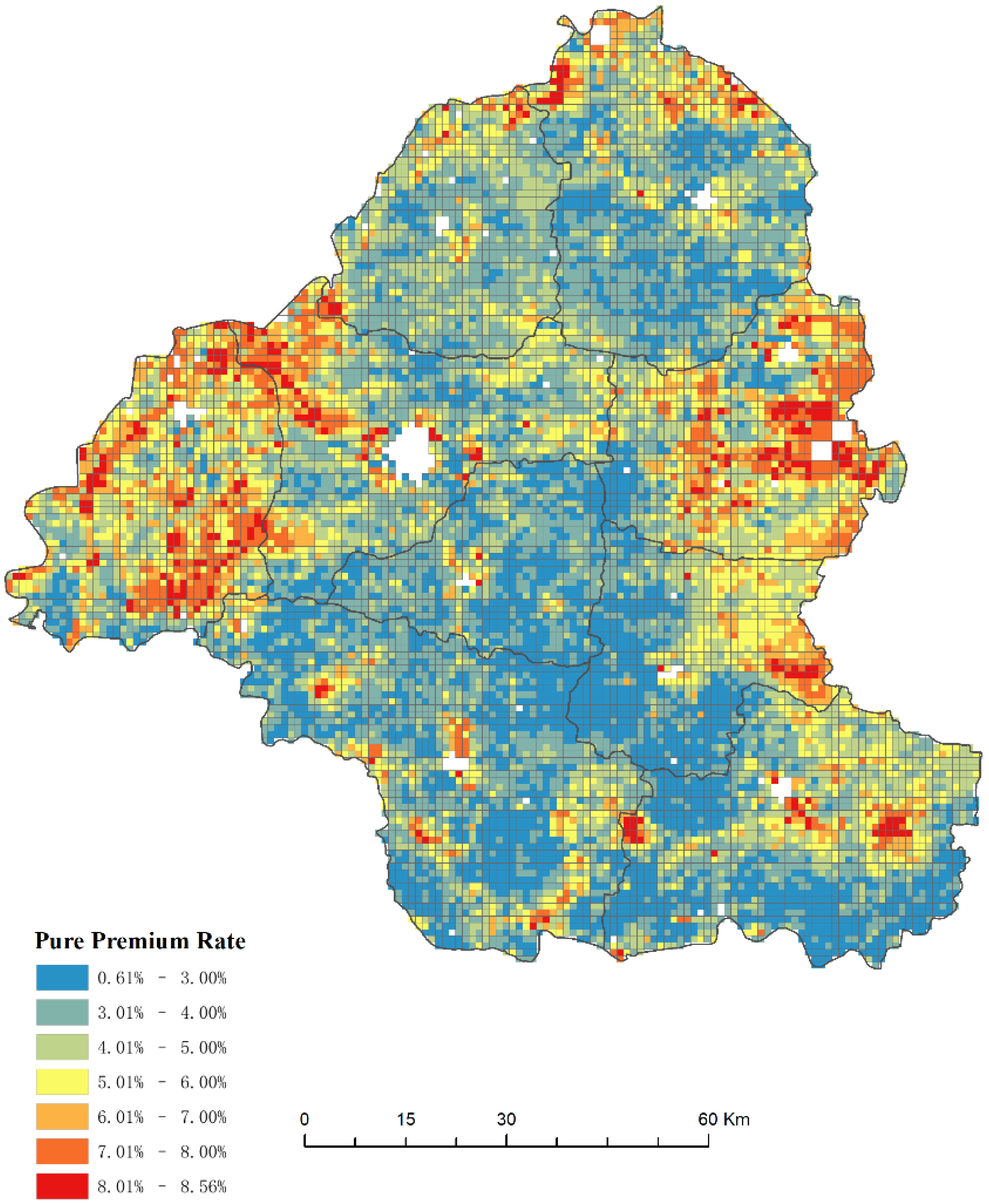Remote Sensing Application in Pure Premium Rate-Making of Winter Wheat Crop Insurance
Abstract
1. Introduction
2. Methods
2.1. Study Area
2.2. Data
2.2.1. Remote Sensing Data
2.2.2. Statistical Data
2.2.3. Administrative Border Data
2.3. Models
2.3.1. Theoretical GPP Calculation
2.3.2. Loss Rate Calculation
2.3.3. Prue Insurance Rate Calculation
2.4. Technology Implementation
3. Results
3.1. Actual GPP
3.2. Proportion of Winter Wheat Cultivated Land Area
3.3. Winter Wheat Pure Premium Insurance Rates in Heze
3.4. Accuracy Verification of Winter Wheat Cultivated Land Area
4. Discussion
4.1. Spatial Refinement of Premium Rate
4.2. Potential of Remote Sensing Applications for Agricultural Insurance and Impact on Sustainable Development
4.2.1. Farm-Level Insurance Accessibility
4.2.2. Data Convenience
4.2.3. Moral Hazard Reduction
4.2.4. Sustainable Agricultural Development
5. Conclusions
Author Contributions
Funding
Institutional Review Board Statement
Informed Consent Statement
Data Availability Statement
Conflicts of Interest
References
- Dalezios, N.R.; Gobin, A.; Alfonso, A.M.T.; Eslamian, S. Agricultural drought indices: Combining crop, climate, and soil factors. In Handbook of Drought and Water Scarcity; CRC Press: Boca Raton, FL, USA, 2017; pp. 73–89. [Google Scholar]
- Shimada, G. The Impact of Climate-Change-Related Disasters on Africa’s Economic Growth, Agriculture, and Conflicts: Can Humanitarian Aid and Food Assistance Offset the Damage? Int. J. Environ. Res. Public Health 2022, 19, 467. [Google Scholar] [CrossRef] [PubMed]
- Kammerbauer, M.; Wamsler, C. Social inequality and marginalization in post-disaster recovery: Challenging the consensus? Int. J. Disaster Risk Reduct. 2017, 24, 411–418. [Google Scholar] [CrossRef]
- Zhang, S.; Zhou, Y.; Yu, R.; Xu, X.; Xu, M.; Li, G.; Yang, Y. China’s biodiversity conservation in the process of implementing the sustainable development goals (SDGs). J. Clean. Prod. 2022, 338, 130595. [Google Scholar] [CrossRef]
- Hickel, J. The contradiction of the sustainable development goals: Growth versus ecology on a finite planet. Sustain. Dev. 2019, 27, 873–884. [Google Scholar] [CrossRef]
- McElwee, P.; Calvin, K.; Campbell, D.; Cherubini, F.; Grassi, G.; Korotkov, V.; Smith, P. The impact of interventions in the global land and agri-food sectors on Nature’s Contributions to People and the UN Sustainable Development Goals. Glob. Chang. Biol. 2020, 26, 4691–4721. [Google Scholar] [CrossRef]
- Zhang, S.; Yang, Y.; Wen, Z.; Peng, M.; Zhou, Y.; Hao, J. Sustainable development trial undertaking: Experience from China’s innovation demonstration zones. J. Environ. Manag. 2022, 318, 115370. [Google Scholar] [CrossRef]
- Hu, C.; Adams, D.C.; Feng, H.; Cheng, J. Refining the Rent Dissipation Model in Land Use: Application to Agricultural Insurance in China. Land 2023, 12, 278. [Google Scholar] [CrossRef]
- Osgood, D.; Powell, B.; Diro, R.; Farah, C.; Enenkel, M.; Brown, M.E.; Husak, G.; Blakeley, S.L.; Hoffman, L.; McCarty, J.L. Farmer Perception, Recollection, and Remote Sensing in Weather Index Insurance: An Ethiopia Case Study. Remote Sens. 2018, 10, 1887. [Google Scholar] [CrossRef]
- Du, X.; Feng, H.; Hennessy, D.A. Rationality of choices in subsidized crop insurance markets. Am. J. Agric. Econ. 2017, 99, 732–756. [Google Scholar] [CrossRef]
- Sinha, S.; Tripathi, N.K. Assessing the Challenges in Successful Implementation and Adoption of Crop Insurance in Thailand. Sustainability 2016, 8, 1306. [Google Scholar] [CrossRef]
- Gao, Y.; Shu, Y.; Cao, H.; Zhou, S.; Shi, S. Fiscal Policy Dilemma in Resolving Agricultural Risks: Evidence from China’s Agricultural Insurance Subsidy Pilot. Int. J. Environ. Res. Public Health 2021, 18, 7577. [Google Scholar] [CrossRef]
- Miranda, M.J. Area-yield crop insurance reconsidered. Am. J. Agric. Econ. 1991, 73, 233–242. [Google Scholar] [CrossRef]
- Zhou, X.H.; Pu, L.; Ke, W. Is the “One Province One Rate” premium policy reasonable for Chinese crop insurance? The case in Jilin Province. J. Integr. Agric. 2018, 17, 1900–1911. [Google Scholar] [CrossRef]
- Skees, J.R.; Black, J.R.; Barnett, B.J. Designing and rating an area yield crop insurance contract. Am. J. Agric. Econ. 1997, 79, 430–438. [Google Scholar] [CrossRef]
- Goodwin, B.K.; Ker, A.P. Nonparametric estimation of crop yield distributions: Implications for rating group-risk crop insurance contracts. Am. J. Agric. Econ. 1998, 80, 139–153. [Google Scholar] [CrossRef]
- Zhou, Q.B.; Yu, Q.Y.; Jia, L.I.U.; Wu, W.B.; Tang, H.J. Perspective of Chinese GF-1 high-resolution satellite data in agricultural remote sensing monitoring. J. Integr. Agric. 2017, 16, 242–251. [Google Scholar] [CrossRef]
- Hilker, T.; Coops, N.C.; Wulder, M.A.; Black, T.A.; Guy, R.D. The use of remote sensing in light use efficiency based models of gross primary production: A review of current status and future requirements. Sci. Total Environ. 2008, 404, 411–423. [Google Scholar] [CrossRef]
- Guerini Filho, M.; Kuplich, T.M.; Quadros, F.L.D. Estimating natural grassland biomass by vegetation indices using Sentinel 2 remote sensing data. Int. J. Remote Sens. 2020, 41, 2861–2876. [Google Scholar] [CrossRef]
- Bojanowski, J.S.; Sikora, S.; Musiał, J.P.; Woźniak, E.; Dąbrowska-Zielińska, K.; Slesiński, P.; Milewski, T.; Łączyński, A. Integration of Sentinel-3 and MODIS Vegetation Indices with ERA-5 Agro-Meteorological Indicators for Operational Crop Yield Forecasting. Remote Sens. 2022, 14, 1238. [Google Scholar] [CrossRef]
- Huang, J.; Gómez-Dans, J.L.; Huang, H.; Ma, H.; Wu, Q.; Lewis, P.E.; Xie, X. Assimilation of remote sensing into crop growth models: Current status and perspectives. Agric. For. Meteorol. 2019, 276, 107609. [Google Scholar] [CrossRef]
- Adzawla, W.; Kudadze, S.; Mohammed, A.R.; Ibrahim, I.I. Climate perceptions, farmers’ willingness-to-insure farms and resilience to climate change in Northern region, Ghana. Environ. Dev. 2019, 32, 100466. [Google Scholar] [CrossRef]
- Zhao, Y.; Wang, X.; Guo, Y.; Hou, X.; Dong, L. Winter Wheat Phenology Variation and Its Response to Climate Change in Shandong Province, China. Remote Sens. 2022, 14, 4482. [Google Scholar] [CrossRef]
- Yang, H.; Yang, X.; Zhang, Y.; Heskel, M.A.; Lu, X.; Munger, J.W.; Tang, J. Chlorophyll fluorescence tracks seasonal variations of photosynthesis from leaf to canopy in a temperate forest. Glob. Chang. Biol. 2017, 23, 2874–2886. [Google Scholar] [CrossRef] [PubMed]
- Guo, L.; Gao, J.; Ma, S.; Chang, Q.; Zhang, L.; Wang, S.; Xiao, X. Impact of spring phenology variation on GPP and its lag feedback for winter wheat over the North China Plain. Sci. Total Environ. 2020, 725, 138342. [Google Scholar] [CrossRef]
- Reeves, M.C.; Zhao, M.; Running, S.W. Usefulness and limits of MODIS GPP for estimating wheat yield. Int. J. Remote Sens. 2005, 26, 1403–1421. [Google Scholar] [CrossRef]
- Bureau, Henan Statistics. Henan Statistical Yearbook; China Statistics Press: Beijing, China, 2007–2017. [Google Scholar]
- Klugman, S.A.; Panjer, H.H.; Willmot, G.E. Loss Models: From Data to Decisions; John Wiley & Sons: Hoboken, NJ, USA, 2004; pp. 557–560. [Google Scholar]
- Boucher, J.-P. Multiple Bonus–Malus Scale Models for Insureds of Different Sizes. Risks 2022, 10, 152. [Google Scholar] [CrossRef]
- Bouslihim, Y.; Kharrou, M.H.; Miftah, A.; Attou, T.; Bouchaou, L.; Chehbouni, A. Comparing Pan-sharpened Landsat-9 and Sentinel-2 for Land-Use Classification Using Machine Learning Classifiers. J. Geovis. Spat. Anal. 2022, 6, 35. [Google Scholar] [CrossRef]
- Li, X.; Ren, J.; Niu, B.; Wu, H. Grain Area Yield Index Insurance Ratemaking Based on Time–Space Risk Adjustment in China. Sustainability 2020, 12, 2491. [Google Scholar] [CrossRef]
- Chan, S.; Nadarajah, S. Risk: An R package for financial risk measures. Comput. Econ. 2019, 53, 1337–1351. [Google Scholar] [CrossRef]
- Zhou, M.; Zhang, H.; Ke, N. Cultivated Land Transfer, Management Scale, and Cultivated Land Green Utilization Efficiency in China: Based on Intermediary and Threshold Models. Int. J. Environ. Res. Public Health 2022, 19, 12786. [Google Scholar] [CrossRef]
- Romano, S.; Hedley, N. Daylighting Past Realities: Making Historical Social Injustice Visible Again Using HGIS-Based Virtual and Mixed Reality Experiences. J. Geovis. Spat. Anal. 2021, 5, 8. [Google Scholar] [CrossRef]








| Landsat-7 ETM Classification Results/Image Elements | User Accuracy/% | |||
|---|---|---|---|---|
| Winter Wheat | Others | |||
| GF-1 classification result/image element | Winter wheat | 413 | 12 | 96.0 |
| Others | 17 | 158 | 92.9 | |
Disclaimer/Publisher’s Note: The statements, opinions and data contained in all publications are solely those of the individual author(s) and contributor(s) and not of MDPI and/or the editor(s). MDPI and/or the editor(s) disclaim responsibility for any injury to people or property resulting from any ideas, methods, instructions or products referred to in the content. |
© 2023 by the authors. Licensee MDPI, Basel, Switzerland. This article is an open access article distributed under the terms and conditions of the Creative Commons Attribution (CC BY) license (https://creativecommons.org/licenses/by/4.0/).
Share and Cite
Wang, W.; Wang, W.; Wang, K.; Zhao, Y.; Yu, R. Remote Sensing Application in Pure Premium Rate-Making of Winter Wheat Crop Insurance. Sustainability 2023, 15, 7133. https://doi.org/10.3390/su15097133
Wang W, Wang W, Wang K, Zhao Y, Yu R. Remote Sensing Application in Pure Premium Rate-Making of Winter Wheat Crop Insurance. Sustainability. 2023; 15(9):7133. https://doi.org/10.3390/su15097133
Chicago/Turabian StyleWang, Weijia, Wen Wang, Kun Wang, Yanyun Zhao, and Ran Yu. 2023. "Remote Sensing Application in Pure Premium Rate-Making of Winter Wheat Crop Insurance" Sustainability 15, no. 9: 7133. https://doi.org/10.3390/su15097133
APA StyleWang, W., Wang, W., Wang, K., Zhao, Y., & Yu, R. (2023). Remote Sensing Application in Pure Premium Rate-Making of Winter Wheat Crop Insurance. Sustainability, 15(9), 7133. https://doi.org/10.3390/su15097133










